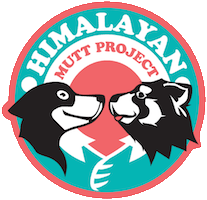Talking about dog-wildlife conflict at National Geographic HQ

HMP has worked hard to learn how dog-diseases could be spread by human-assisted movement. Dogs and people travel to new areas of the world every year, and come into ever-increasing contact with wildlife. This information is important, not only to conservationists in the Himalaya, but to those all over the world. I was very grateful for the opportunity to share about our National Geographic funded project to investigate disease in Nepal, with scientists and educators from all over the world at the 2019 NatGeo Explorers Festival in Washington DC this month. Photo: Leigh Vogel

The event was also an opportunity to learn from the experience of others and get feedback about our work. Daniel Kinka (left) is a NatGeo Fellow who used to work with guardian dogs in US rangelands to manage diseases shared by wild and domestic sheep, thus promote coexistence between large North American carnivores and ranchers. Daniel now works on restoring grasslands for bison.
Eddy Syaluha is the Head Veterinarian for Gorilla Doctors in Democratic Republic of Congo. He is implementing non-invasive health monitoring of unhabituated critically endangered Grauer’s gorillas. Most fascinating is Eddy's study of how the choice of diet by these unhabituated gorillas could expose them to deadly pathogens.

Daniella is a staff at National Geographic. She heard my presentation and our story resonated with her immediately as three of her dogs in Bahamas died from distemper. She was just a young girl then, and watched as her mom rubbed tar on the forehead of their dogs to try ti cure them of their ailments. I love learning how different cultures try to support their animals. These stories tell us that people care but lack resources. It is our responsibility to connect them with the resources that they need.
Above is a video of the spotlight event that was our opportunity to highlight our work with dogs, people and disease in the Himalaya.

The support from National Geographic allowed us to expand our dog-neutering and rabies vaccination program to include studies into under-studied infectious diseases. But it was YOU, incredible donours who responded to our crowd-funding calls, that helped us get into the Himalaya in the first place! Your interest and belief in our work is what has kept us going, and YOU will be the reason that we continue our work. Thank YOU for the opportunity to work for people and wildlife in the Himalaya. Photo: Mark Thiessen






















